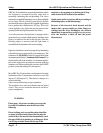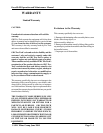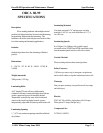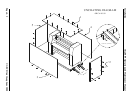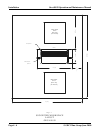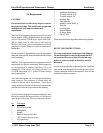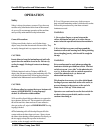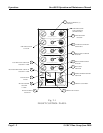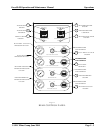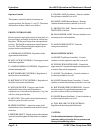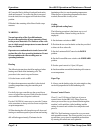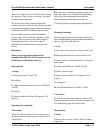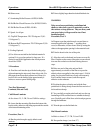
Page 5 - 1
OperationsOrca 80-99 Operation and Maintenance Manual
© GBC Films Group June 2000
OPERATION
Safety
Safety is always the primary concern. If you have not
read the safety information at the front of this manual,
do so now. Do not attempt operation of the machine
until you fully understand this safety information.
General Precautions
1. Keep razor blades, knives, and all other sharp
objects away from the chrome and silicone rollers. They
are easily damaged and very expensive to replace.
CAUTION:
Insert shims to keep the laminating and pull rolls
apart when the machine is not in use. Do not rely
on the air supply. Prolonged contact can damage
the rolls.
2. Harsh chemicals such as Toluene or MEK will
destroy the silicone covering on the laminating rolls. The
rolls should be cleaned daily following the procedure
outlined in the Maintenance section of this manual.
CAUTION:
If silicone adhesives contact the top or bottom roll,
remove it IMMEDIATELY using isopropyl
alcohol. It will harden within an hour.
3. Do not allow liquid silicone adhesives to contact the
top or bottom silicone roll. These materials will bond to
the roll in much less than one hour. If some adhesive
does get on the roll, wipe it off IMMEDIATELY using
isopropyl alcohol.
4. The laminating rolls will develop flat spots if left in
contact with each other when not in use. Always insert
the shims when shutting off the laminator. Do not rely on
the air supply to keep the top roller in the raised
position, as the air supply can fail at any time.
5. Use a 100-percent cotton terry cloth to remove
heat-activated laminating residue, while the rolls are hot.
Follow this procedure every time heat-activated
laminates are used.
WARNING:
1. Never place fingers or arms between the
rollers, both main and pull, or in roller slots no
matter what the operational status the machine is
in.
2. It is vital that everyone working around the
laminator rolls avoid wearing loose-fitting clothing,
ties or dangling jewelry, which could be caught in
the nip.
WARNING:
Extra caution must be used when operating the
laminator with the provided foot switch. The foot
switch acts as an “over-ride” to the photoelectric
eye; i.e., it allows the rolls to continue operation
even if the photoelectric eye detects an
obstruction near the nip.
This function is necessary a) to allow initial hand-
feeding of process materials to the rolls and b) to
prevent damage to the process at the end of a
sheet due to “curl-up” of the sheet end.
Operators are cautioned to use the foot switch for
as short a time as practicable, and to exercise
caution when doing so.



